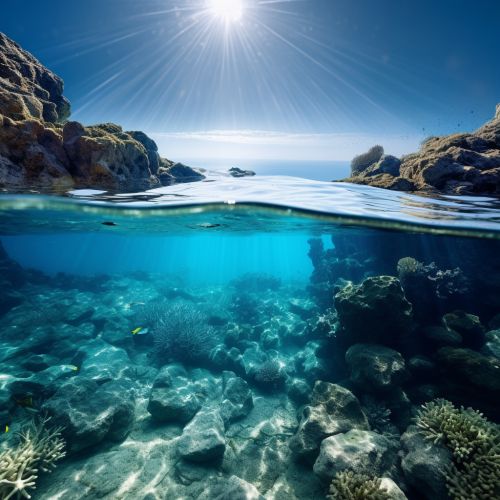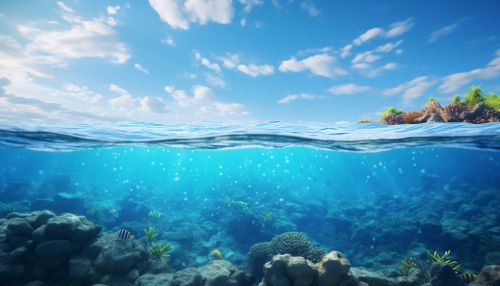The Dynamics of Continental Shelf Processes
Introduction
The continental shelf is a significant component of the world's oceanic system, playing a crucial role in the planet's climate, biodiversity, and geological processes. The dynamics of continental shelf processes involve a complex interplay of physical, chemical, and biological factors that shape the shelf's morphology, influence its ecosystems, and impact human activities.


Physical Processes
Hydrodynamics
Hydrodynamics, the study of fluids in motion, is a critical aspect of continental shelf dynamics. The ocean currents that flow across the shelf, driven by wind, tides, and density differences, transport heat, nutrients, and sediments, profoundly influencing the shelf's physical and biological characteristics.
Sediment Transport
Sediment transport is another key physical process on the continental shelf. Sediments, derived from terrestrial sources or produced within the ocean, are moved by currents and waves. This transport shapes the seafloor, forms depositional features like sand banks and mudflats, and influences the distribution of benthic habitats.
Tectonic Activity
The continental shelf is also a site of tectonic activity, with processes such as sea-floor spreading, subduction, and isostatic adjustments contributing to its formation and evolution. These processes can lead to the creation of new shelf areas, changes in shelf slope, and the formation of features like canyons and ridges.
Chemical Processes
Chemical processes on the continental shelf involve the interaction of seawater with sediments, the cycling of nutrients, and the transformation of chemical compounds. These processes are crucial for the productivity of shelf ecosystems and the sequestration of carbon.
Nutrient Cycling
Nutrient cycling is a vital process on the continental shelf. Nutrients such as nitrogen, phosphorus, and silicon are cycled through the water column and sediments, supporting primary production and influencing the composition of biological communities.
Carbon Sequestration
The continental shelf is a significant site of carbon sequestration, the process by which carbon dioxide is captured from the atmosphere and stored in the ocean. This process, driven by biological activity and physical mixing, helps to regulate the planet's climate.
Biological Processes
Biological processes on the continental shelf include primary production, the cycling of organic matter, and the interactions of organisms within and across trophic levels.
Primary Production
Primary production, the synthesis of organic matter by photosynthetic organisms, is a fundamental process on the continental shelf. It supports the shelf's food webs, contributes to carbon sequestration, and influences the distribution of species.
Trophic Interactions
Trophic interactions, the relationships between organisms at different levels of the food chain, shape the structure and dynamics of shelf ecosystems. These interactions, which involve predation, competition, and symbiosis, influence species distributions, population dynamics, and community composition.
Human Impacts
Human activities have significant impacts on the dynamics of continental shelf processes. These impacts include changes in sediment supply due to land use, alterations in nutrient cycling due to pollution, and shifts in biological communities due to fishing and habitat destruction.
Conclusion
Understanding the dynamics of continental shelf processes is crucial for managing and conserving these important marine environments. As our knowledge of these processes continues to grow, it will provide valuable insights into the functioning of the global ocean system and the impacts of human activities on it.
